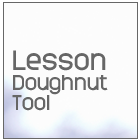
Creating the structure of a lesson based upon the timing of each activity is critical to maintaining engagement and pace to the lesson. The ‘lesson Doughnut’ is a graphical way of representing the lesson, which can visually show you potential strengths and issues immediately and in a format which is easier to reflect upon than a conventional lesson plan.
Below is shown an example of a Lesson Doughnut graphic. This in essence is a doughnut chart reflecting each section of the lesson, the type of activity and its length.

Some points to consider when reflecting upon the structure of your lesson doughnut could be:
Do I have too many activities?
- (This can slow the pace of learning due to the constant stopping and starting of the lesson leading to disengagement).
Do I have too few activities?
- (Activities that stretch for too long can slow the pace of learning through disengagement due to waning interest or potential lack of understanding of the task).
Is the range of activities teacher dominated?
- (Remember that the students should be undertaking the learning; as such provide as much opportunity for them to do rather than being passive).
Have I used reflection within my lesson?
- (Ensure that students have time to reflect on their progress and ensure that they are working along the correct lines).
Try our interactive tool. It’s easy to use and gives you instant feedback so you can analyse your lesson to see if it’s student friendly!
This final section outlines some examples of lesson structures which are effective ways of teaching. Each one has its own benefits and pitfalls to be aware of. The lessons are split into sections, each category for these sections is outlined below-
Types of activity categories-
- Starters- A short activity at the start of the lesson to engage students and set the theme for the learning that will take place. This should be student focussed.
- Q&A- A teacher led questioning session to check learning and also to highlight the key points that have occurred during the lesson thus far.
- Teacher led- A teacher dominated activity i.e. instructions or leading through an exercise step by step.
- Activity- A student centred activity either individual, in pairs or in groups.
- Reflection- Student activity where they reflect on their learning and progress (Green Pen). This can be self or peer assessment.
- Plenary- A summative activity at the end of the lesson to reflect upon and/or apply the new learning form the lesson.














